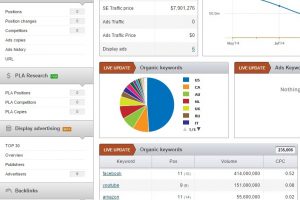Negative SEO Techniques That Harm
Negative SEO Techniques That Can Hurt Your Website
Greedy SEO agencies and unscrupulous web masters often deploy SEO tactics that attempt to trick the search engines in the vain attempt to achieve ranking positions. Along with doorway pages, thin and/or duplicate content pages, poor search engine optimization may also use the following negative SEO techniques to sabotage a website:
1. Poor quality backlinks
The first negative SEO technique that people may use is to point a large number of poor quality backlinks to your site. They pay for huge number of spam links and point them to your website. This is intended to negatively affect your site’s link profile so that you get penalized by search engines. Search engines usually penalize sites that receive a sudden rise in backlinks. Since you cannot stop people from sending poor backlinks, you should monitor your site’s backlink profile regularly to identify any spam links. If you identify unnatural links, take down those links or contact your webmaster to do so. If this fails, use Google’s Disavow Links Tool to address the problem.
 2. Duplicate content
2. Duplicate content
Duplicate content can attract severe penalties from search engines. Crooked competitors may duplicate your content even before it is indexed. Their intention is to convince search engines that you are stealing content from another original site. Conduct a quick Google search of any sentence from your site in quotes to know if your content is being stolen. Prevent your site from this evil activity by maintaining an up-to-date sitemap. Additionally, include the rel=canonical tag on your webpages to establish you as the original author of that content.
3. Hacking
If your site has loopholes, then it might be at a risk of being hacked. The intention of hackers is to either take your site down or make it impossible for Google to crawl it. Hackers will use the loopholes in your site to add malicious codes or links. Denial-of-service attacks are also propagated by hackers. Hacking can severely affect your site’s ranking. Therefore, scan your website regularly for any changes in the site code.
4. Fake reviews
Customer reviews are important in determining search engine ranking. Your competitors may use fake reviews to bring down your site. Their ultimate goal is to have your site punished by search engines. You can prevent this damage by reporting fake reviews to Google. Additionally, plug the loopholes in your site before they are noticed by other people.
5. Evil crawlers
The speed of a website is important to customers and search engines. A fast site gives its users a good experience. People might sabotage your site by using crawlers to crawl your site continually. As a result, it will become slow to load and use. This in turn will worsen your SEO campaign and also affect your site’s conversion rate.
More Negative SEO Tactics
In some industry verticals, rank chasing is common and does more harm than good to the brand and the business. Frequently city or location pages with duplicate and thin content are created to influence local SEO and local rank. This tactic eventually gets caught up in spam filters and can lead to a significant decline in organic search traffic and a potential for the the domain being banned by the search engines. This is one negative SEO tactic to avoid at all costs.










